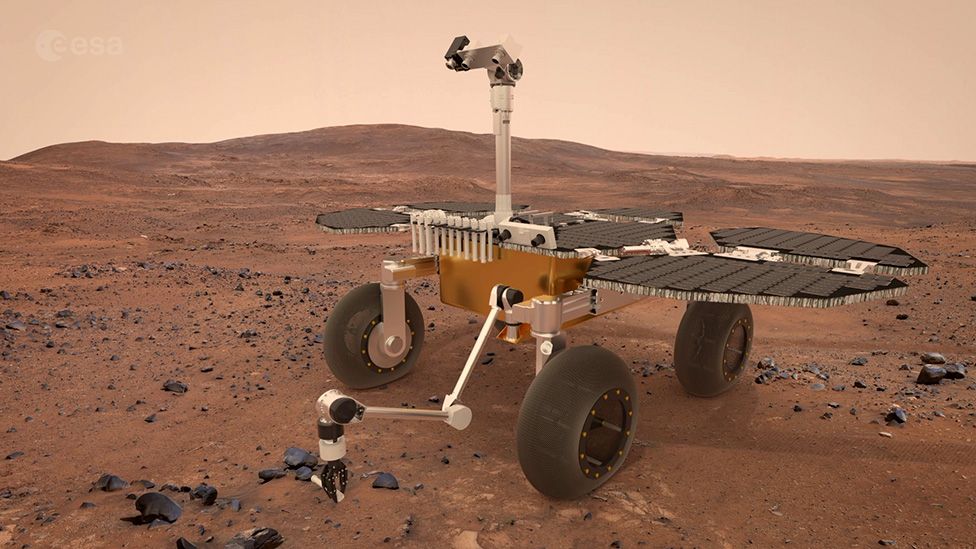22.07.2022

The US and Europe are remodelling their plans to bring rock samples back from Mars, for study in Earth laboratories.
They hope to simplify the process, cut risk and cost using helicopters instead of a British-built "fetch rover".
Airbus UK engineers, who have been developing the concept for years, have been expressing disappointment, at the Farnborough International Airshow 2022.
Also at the Hampshire show, Italian aerospace giant Leonardo signed a €55m (£46m) deal for key mission hardware.
Its trade stand exhibited an actual-size model of a robotic arm - complete with "shoulder", "elbow" and "wrist" - it will now deliver to US space agency Nasa by November 2025.

"It's 2.5m [8ft] long and has seven degrees of movement," project manager Dr Guido Sangiovanni told BBC News.
"But it's important to note that it's not just the arm. There is the computer, the electronics and the cameras - the full system."
Sophisticated lab tests of the samples will probably be the only way to determine whether there is or has ever been life on Mars.
But the complex procedures involved in the mission will cost many billions, in any currency.
 IMAGE SOURCE, NASA/JPL-CALTECH
IMAGE SOURCE, NASA/JPL-CALTECHNasa's Perseverance rover has already spent a year drilling in Mars' Jezero crater, caching rocks in titanium tubes.
The Airbus UK-assembled rover would have taken these to an Earth-bound rocket.
But the American and European space agencies are now confident Perseverance can do this itself.
 IMAGE SOURCE, NASA/JPL-CALTECH/MSSS
IMAGE SOURCE, NASA/JPL-CALTECH/MSSS"The architecture is evolving right now and nothing is absolutely finalised," European Space Agency human and robotic exploration director, Dr David Parker, told BBC News.
"But Perseverance is there and being very effective - and the reliability analysis suggests Perseverance will keep on working. And that would allow us to streamline the programme and remove the fetch rover, taking out the need for another [risky] landing on Mars."
 IMAGE SOURCE, ESA
IMAGE SOURCE, ESAIf Perseverance breaks down, mini-helicopters could be asked to do the job.
Perseverance's own drone, Ingenuity, has proven conclusively that aircraft work in Mars' thin atmosphere.
"So, maybe, we can use helicopters, one or two of them, as insurance," Dr Parker said.
Whichever robotic courier is used, the Leonardo arm will be present to accept the samples and place them in the rocket.
 IMAGE SOURCE, NASA
IMAGE SOURCE, NASAA landing platform containing the helicopters, robotic arm and return rocket would leave for Mars mid-2028, with a roughly two-year cruise time.
Quelle: BBC
